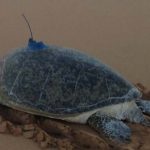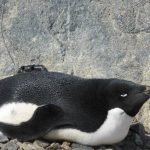← Back
Tracking Sea Turtles in Brazil via the Argos System

Sea turtles, are highly migratory have a complex life cycle and use a wide range of habitats. All five turtle species found along the Brazilian coast are endangered and included in the National Brazilian Endangered Fauna Species List of the Ministry of the Environment, and in Appendix I to the CITES convention. These species include the loggerhead sea turtle (Caretta caretta), the hawksbill sea turtle (Eretmochelys imbricata), the olive ridley sea turtle (Lepidochelys olivacea), the leatherback sea turtle (Dermochelys coriacea) and the green sea turtle (Chelonia mydas).
TAMAR-ICM Bio project from 1980 to today
In 1980, the Sea Turtle Conservation project today known as the TAMAR-ICM Bio project was created to identify the main breeding sites of sea turtles in Brazil and threats to their survival.
Argos satellite tracking and results
Argos satellite tracking (or “telemetry”) has significantly improved our understanding of sea turtle behaviour. Adult females, for example, can migrate thousands of kilometres between breeding sites and feeding grounds. Satellite tracking is used to map migratory routes and identify foraging and high-use areas.
Conservation implications
Tracking data helped us understand some of the movements and high-use areas of sea turtles in Brazil. These findings were used to organize certain human activities such as fishing, and to improve coastal management.
A factor of great importance is that the breeding and foraging grounds of most turtles tracked are located within Brazilian territorial waters. This provides a good starting point to ensure the long term protection of this important portion of sea turtle’s life cycle, as many political and national conservation measures are already established.

![a whale and the boat used to equip it, taken during a campaign in 1990 (C. Moriaz) (from [Viale et al., 2019])](https://www.argos-system.org/wp-content/uploads/2022/02/whale-1-150x150.jpg)

